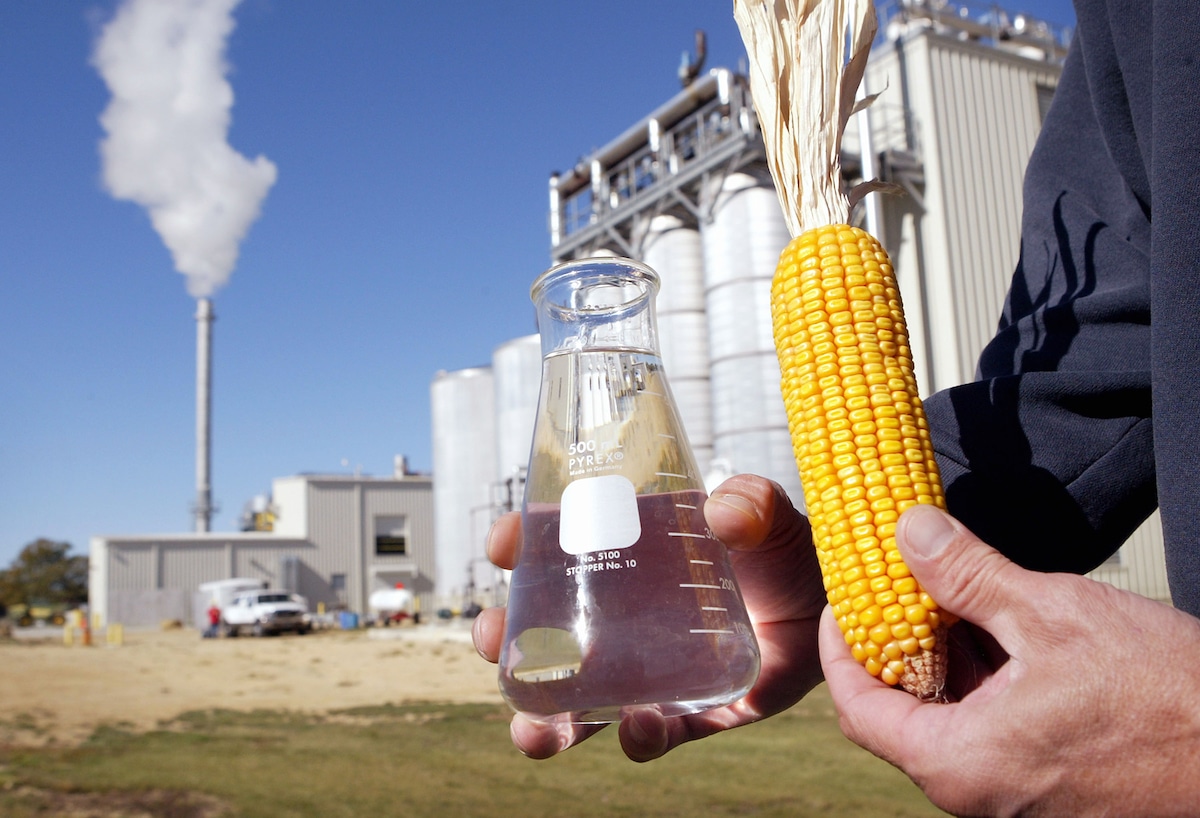

For years, corn-based ethanol has been mixed with the gasoline sold at gas stations across the U.S., but a recently published study has found that its carbon intensity is “likely at least 24% higher” than gas, Roadshow by CNET reported.
The study, “Environmental Outcomes of the US Renewable Fuel Standard,” was published by the journal Proceedings of the National Academy of Sciences. It examined U.S. use of water and land resources from 2008 to 2016, during the country’s Renewable Fuel Standard (RFS) program. The program was a national governmental policy that required a certain amount of fuel from renewable sources to reduce or replace heating oil, transportation fuel or jet fuel that was petroleum-based.
The study refutes earlier research commissioned by the U.S. Department of Agriculture (USDA) that showed that biofuels like ethanol were relatively clean, Reuters reported.
“Corn ethanol is not a climate-friendly fuel,” said assistant scientist at the University of Wisconsin-Madison Center for Sustainability and the Global Environment Dr. Tyler Lark, who was the study’s lead author, as reported by Reuters.
The study was partially funded by the National Wildlife Federation and U.S. Department of Energy. It found that the combination of changes in land use made in order to grow corn, in addition to its combustion and processing, made corn-based fuel more polluting than gas.
Geoff Cooper, president and CEO of ethanol trade lobby the Renewable Fuels Association, referred to the study as “completely fictional and erroneous,” saying that “worst-case assumptions [and] cherry-picked data” were used by the study’s authors, as Reuters reported.
The U.S. Renewable Fuel Standard, a 2005 law, requires that oil refineries in the U.S. combine 15 billion gallons of corn-based ethanol with their gas each year. The purpose of the law was to lower emissions while reducing the country’s dependence on imported fuel and supporting U.S. farmers.
The RFS resulted in an 8.7 percent increase in the cultivation of corn on an additional 6.9 million acres of land. Carbon that is stored in the soil is released during the tilling of fields.
According to Civil Eats, as corn prices went up by 30 percent as a result of the RFS, farmers planted more corn in place of other crops, cultivated pastures and tilled land that had been set aside for conservation. Rotating in soybean crops, beneficial for carbon storage in the soil, was often given up or reduced in favor of growing more corn.
“In places like Iowa, where farmers typically rotated corn and soybeans, we see a lot more continuous corn or three-year rotations of corn, corn, soybean,” said natural resource economist at the University of Iowa Silvia Secchi, as Civil Eats reported.
A 2020 study found that nitrogen from farms in the Midwest flowing downriver was the cause of as much as $2.4 billion worth of damages to fish and their habitat each year for over 30 years, and was a major contributor to the Gulf of Mexico’s “dead zone.”
As part of an effort to fight climate change and tackle U.S. carbon emissions, the Biden administration has been reviewing its policies on biofuels, reported Reuters. The fuel blending requirements under the RFS expire this year and the EPA will propose next year’s requirements in May.
“If this paper is discounted [in RFS deliberations], or we fail to acknowledge the net greenhouse gas effect of corn ethanol, we will be admitting this policy is all about income support for farmers,” Secchi said, as Civil Eats reported.
Senior researcher at Princeton University’s Center for Policy Research on Energy and the Environment Timothy Searchinger said the recent study shows that land use matters.
“It’s crazy to use this very limited resource — highly productive land — for energy,” said Searchinger, as reported by Civil Eats. “It’s almost spectacularly inefficient.”
The study focused on U.S. emissions, but the international impact could be much higher.
“The international effects are undoubtedly larger than the domestic effects,” Searchinger said.
It could be a pivotal year for biofuel and its related land use.
“Decisions made this year have the potential to impact our climate and landscape for decades to come,” stated Lark, as Civil Eats reported.

 233k
233k  41k
41k  Subscribe
Subscribe 